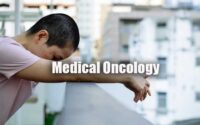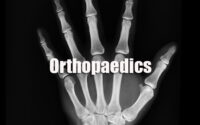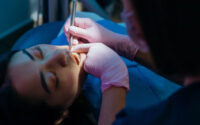Microbiology Previous Question
Microbiology Previous Question Papers help the aspirants in the preparation. Previous papers give an overview of the exam paper and the way questions are going to be. However, aspirants who are going to appear for examinations can get the Previous Question Papers pdf for free.

Also, check the exam pattern and syllabus details before going to the Microbiology Previous Question Papers. Microbiology exam Previous Question Papers paper are here. Aspirants can find the respective download links for Microbiology Previous Question Papers Pdf. check the latest Microbiology Previous Question Papers on our page.
Previous Question Papers on Microbiology
1. Acycloguanosine is a nucleoside analog which is active against
(1) Influenza A virus
(2) HIV virus
(3) Herpes virus
(4) Influenza B virus
2. Which of the following is a drug that interferes with the process of DNA production in the virus that causes genital herpes ?
(1) Erythromycin
(2) Vancomycin
(3) Amantadine
(4) Acyclovir
3. By which of the following means antifungal chemotherapeutic agents may affect fungi ?
(1) Interfere with nuclear division by preventing the aggregation of microtubules needed for mitosis.
(2) Interfere with normal nucleic acid synthesis.
(3) Interfere with ergosterol biosynthesis and thus alter the structure of the cytoplasmic membrane as well as the function of several membrane-bound enzymes like those involved in nutrient transport and chitin synthesis.
(4) All of these
4. Who developed the concept of specific toxicity ?
(1) Pasteur
(2) Fieming
(3) Watson
(4) Ehrlich
5. Treatment of municipal water supplies is based upon :
(1) Coagulation, filtration, chlorination
(2) Chlorination, filtration, coagulation
(3) Filtration, coagulation, chlorination
(4) Coagulation, chlorination, filtration
6. Who discovered transposons (jumping genes) ?
(1) Abelson
(2) Harvey
(3) McClintock
(4) Griffith
7. The cloning step in PCR sequencing analysis of microbial communities is necessary for :
(1) the amplification process
(2) preventing contamination by outside DNA
(3) separating the different rRNA gene sequences in the mixture
(4) None of these
8. Factors influencing the nosocomial infection are :
(1) Patient susceptibility
(2) Microbial agent
(3) Environment factors
(4) All of these
9. What are the types of hospital acquired infection ?
(1) Ventilator associated pneumonia
(2) Surgical site infection
(3) Central line associated blood stream infection
(4) All of these
10. Which one of the following is most characteristic of Mycoplasma pneumoniae infection ?
(1) Infection results in a fever of sudden onset accompanied by a productive cough.
(2) Infection most commonly occurs in the upper respiratory tract.
(3) Infection is definitively diagnosed by direct microscopic examination of sputum.
(4) Re-infection is rare and less severe than primary infection.
11. Each of the following organisms is an important cause of urinary tract infections except :
(1) Klebsiella pneumoniae
(2) Escherichia colt
(3) Bacteroides fragilis
(4) Proteus mirabilis
12. Candida Albicans present as normal flora in mouth colon and
(1) Vagina
(2) Intestine
(3) Uterus
(4) Skin
13. Lactobacillus is a human pathogen that is also part of normal flora and found in:
(1) Colon
(2) Mouth
(3) Genital Tract of female
(4) All of these
14. Which of the following is not a toxic type of food poisoning ?
(1) Staphylococcus aureus
(2) Bacillus cereus
(3) Clostridium botulinum
(4) Campylobacter jejuni
15. A Child who has not been vaccinated with H.influenza comes to the OPD at 14. months. How many doses, including booster would you like to give to this child ?
(1) 4 doses
(2) 3 doses
(3) 2 doses
(4) Only one dose
16. For the prevention of human rabies, immediate flushing and washing the wound(s) in animal bite cases, with plenty of soap and water, under running tap should be carried out for how much time ?
(1) 2 minutes
(2) 1 minute
(3) 15 minutes
(4) 5 minutes
17. Which of the following antibiotics works by blocking RNA synthesis ?
(1) Ofloxacin
(2) Rifampicin
(3) Chloramphenicol
(4) Tetracycline
18. Adjuvant used in DPT is:
(1) Silica
(2) B. Magnesium
(3) C. Manganese
(4) D. Aluminum
19. Which of the following is a causative agent of acute endocarditis ?
(1) Salmonella typhi
(2) Haemophilus influenza
(3) Staphylococcus aureus
(4) Pseudomonas spp
20. Which of the following is an important disinfectant on account of effectively destroying gram-positive and gram negative bacteria, viruses and even spores at low pH levels
(1) Phenol
(2) Alcohol
(3) Chlorine
(4) Hexachlorophene
| Previous Year Question | Practice Set |
| Important Question | Viva Question |
| Sample Papers | Quiz |
| Model Papers | MCQs |
| Mock Test | Questions and Answers |
21. Phenol co-efficient indicates :
(1) Efficacy of a disinfectant
(2) Dilution of a disinfectant
(3) Quantity of a disinfectant
(4) Purity of a disinfectant
22. Prokaryotic cells are more resistant to osmotic shock than eukaryotic cells because :
(1) Their cell wall is composed of peptidoglycan.
(2) They are selectively permeable.
(3) hey contain osmoregulating porins.
(4) They block water molecules from entering the cell.
23. Streptococci which are destroyed at 60°C for 30 minutes
(1) Preptostreptococci
(2) Strepto viridians
(3) Strepto hemolyticus
(4) All of these
24. Electron microscope studies does not help in identifying the section of bacterial spore :
(1) Core
(2) Spore cortex
(3) Capsule
(4) All of these
25. Cell cycle regulated by :
(1) Cyclins
(2) Cdks
(3) Cyclins and Cdks
(4) None of these
26. Which of these is a trace element for bacteria ?
(1) Mg+2
(2) Na+
(3) Ca+2
(4) Mn+2
27. The protein moiety of an enzyme is known as –
(1) Holo enzyme
(2) Apo enzyme
(3) Co-enzyme
(4) Enzyme
28. Which one of the following mineral elements play an important role in biological nitrogen fixation ?
(1) Copper
(2) Magnesium
(3) Zinc
(4) Molybdenum
29. The process of formation of mesozygote is called
(1) Meromixis
(2) Exozygote
(3) Mitosis
(4) Meiosis
30. The genetic material in HIV is :
(1) dsDNA
(2) ssDNA
(3) sRNA
(4) None of these
31. Humans normally have 46 chromosomes in skin cells. How many autosomes would be expected in a kidney cell ?
(1) 46
(2) 23
(3) 47
(4) 44
32. Genomic DNA is extracted, broken into fragments of reasonable size by a restriction endonuclease and then inserted into a cloning vector to generate chimeric vectors. The cloned fragments are called
(1) Clones
(2) Genomic library
(3) mRNA
(4) None of these
33. Following substance may act as an antigen :
(1) Egg albumin
(2) RBC and serum
(3) Vegetable protein
(4) Snake venom
34. Which antibody is called millionaire molecule ?
(1) IgA
(2) IgM
(3) IgG
(4) IgD
35. After the contact with foreign antigens, body produces specific antibody. These specific antibodies are readily detectable in serum following primary contact with antigen after :
(1) 10 min
(2) 1h
(3) 5-7 days
(4) 3-5 weeks
36. An anamnestic response involves a/an :
(1) effector response
(2) high intensity
(3) rapid memory
(4) All of these
37. The membrane attack complex in the complement pathway consists of :
(1) C3b3b, Bb
(2) CS5b, 6, 7, 8,9
(3) Colicins
(4) OH
38. One principal function of complement is to:
(1) bind antibodies attached to cell surfaces and to lyse these cells
(2) cross link allergens
(3) inactivate perforins
(4) mediate the release of histamine
39. Which of the following is useful to STIMULATE antibody production ?
(1) An adjuvant
(2) A hapten
(3) Anti serum
(4) Purified antigen
40. Agammaglobulinemia is an immunodeficiency disease due to a deficiency in:
(1) T cells
(2) Igk
(3) Cytokines
(4) Bcells
41. Which disease would be most similar to AIDS in its pathology ?
(1) SCID
(2) Di-George syndrome
(3) Agammaglobulinemia
(4) ADA deficiency
42. All of the following are true with respect to IgE molecules, EXCEPT which one ?
(1) They are involved in mediating anti-parasitic immune responses.
(2) They are the principal immunoglobulin class involved in allergic reactions.
(3) They can affect the release of histamine and other chemical mediators.
(4) They will cross the placenta and fix complement.
43. Fusion between a plasma cell and a tumor cell creates a:
(1) Myeloma
(2) Lymphoblast
(3) Lymphoma
(4) Hybridoma
44. A living microbe with reduced virulence that is used for vaccination is considered :
(1) A toxoid
(2) Dormant
(3) Virulent
(4) Attenuated
45. The ability of the immune system to recognize self antigens versus nonself antigen is an example of :
(1) Specific immunity
(2) Tolerance
(3) Cell mediated immunity
(4) Antigenic immunity



